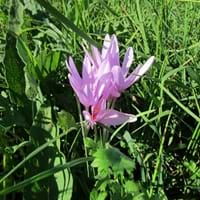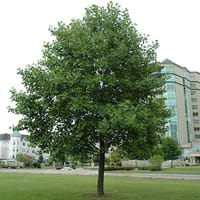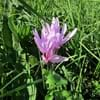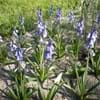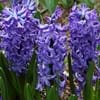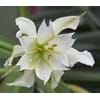Life Span
Perennial
Perennial
Type
Bulb or Corm or Tuber
Tree
Origin
Europe, Turkey, Central Asia, Western Asia
Northeastern United States, Mid-Atlantic United States, Southeastern United States, Central United States
Types
Colchicum cupanii, Colchicum alpinum
Ardis, Arnold, Aureomarginatum
Habitat
Fields, meadows, Rocky areas, Shaded sites, Woodlands
Bluffs, low mountains, Moist Soils, Woodlands
USDA Hardiness Zone
Not Available
5-9
AHS Heat Zone
Not Available
9-2
Sunset Zone
21,22
1a, 1b, 2a, 2b, 3a, 3b, 4, 5, 6, 7, 8, 9, 10, 11, 12, 14, 15, 16, 17, 18, 19, 20, 21, 22, 23
Habit
Clump-Forming
Pyramidal
Flower Color
White, Yellow, Purple, Violet
Orange, Light Yellow
Flower Color Modifier
Bicolor
Bicolor
Fruit Color
Not Available
Lime Green, Brown
Leaf Color in Spring
Green
Green, Light Green
Leaf Color in Summer
Light Green
Green
Leaf Color in Fall
Several shades of Green
Yellow, Light Yellow, Yellow green
Leaf Color in Winter
Light Green
Not Available
Leaf Shape
Long Linear
Irregular
Plant Season
Spring, Fall, Winter
Spring, Fall
Sunlight
Full Sun, Partial Sun
Full Sun, Partial Sun
Growth Rate
Medium
Medium
Type of Soil
Loam
Clay, Loam
The pH of Soil
Acidic, Neutral
Acidic, Neutral
Soil Drainage
Well drained
Average
Bloom Time
Early Spring, Late Summer, Early Fall, Fall, Late Fall, Winter, Late Winter
Late Spring
Tolerances
Drought
Soil Compaction
Where to Plant?
Container, Ground, Pot
Ground
How to Plant?
Divison, Seedlings
Seedlings
Plant Maintenance
Low
Low
Watering Requirements
Do Not over Water, Medium, Needs less watering, Never Over-water, Requires regular watering, Water less during winter
Do Not over Water, Keep the ground moist but not water-logged, Requires regular watering
In Summer
Ample Water
Ample Water
In Spring
Less Watering
Moderate
In Winter
Less Watering
Average Water
Soil pH
Acidic, Neutral
Acidic, Neutral
Soil Type
Loam
Clay, Loam
Soil Drainage Capacity
Well drained
Average
Sun Exposure
Full Sun, Partial Sun
Full Sun, Partial Sun
Pruning
Remove damaged leaves, Remove dead leaves, Remove dead or diseased plant parts, Remove shoots
Prune ocassionally, Remove dead branches
Fertilizers
fertilize in growing season, Less fertilizing
All-Purpose Liquid Fertilizer, fertilize in spring, Fertilize the soil instead of direct applying, Mulch
Pests and Diseases
Not Available
fusarium canker, nectria canker, yellow-poplar weevil
Plant Tolerance
Drought
Soil Compaction
Flower Petal Number
Single, Double
Not Available
Foliage Texture
Coarse
Coarse
Foliage Sheen
Not Available
Matte
Attracts
Bees, Butterflies
Birds
Allergy
Kidney Disease, Low blood pressure, Stomach pain, Toxic, Vomiting
no allergic reactions
Aesthetic Uses
Landscape Designing
Showy Purposes
Beauty Benefits
No Beauty Benefits
Not Available
Environmental Uses
Air purification, No fertilizer, pesticides, or herbicides needed, Prevent Soil Erosion
Shadow Tree, Shelter for wildlife
Medicinal Uses
anti-cancer, anti-inflammatory, Diarrhea, Diuretic, Rheumatism
Arthritis, Digestion problems, Fever, Inflammation, Wounds
Part of Plant Used
Flowers, Leaves
Whole plant
Other Uses
Employed in herbal medicine, Showy Purposes, Used as Ornamental plant, Used for its medicinal properties
Food for animals, Grown for shade, Used as Ornamental plant, Used in Furniture
Used As Indoor Plant
Yes
No
Used As Outdoor Plant
Yes
Yes
Garden Design
Alpine, Container, Cutflower, Foundation, Lawns and Turf, Mixed Border, Rock Garden / Wall, Wildflower
Feature Plant, Shade Trees, Street Trees
Botanical Name
COLCHICUM
LIRIODENDRON tulipifera
Common Name
Colchicum
Tulip Poplar, Yellow Poplar
In Hindi
colchicum
ट्यूलिप पेड़
In German
colchicum
Tulpenbaum
In French
colchique
tulipier
In Spanish
Colchicum
árbol de tulipán
In Greek
Colchicum
δέντρο τουλίπα
In Portuguese
Colchicum
árvore de tulipa
In Polish
Colchicum
tulipanowiec
In Latin
Colchicum
Tulipa arbore
Phylum
Magnoliophyta
Tracheophyta
Class
Liliopsida
Magnoliopsida
Order
Liliales
Magnoliales
Family
Liliaceae
Magnoliaceae
Genus
Colchicum
Liriodendron
Clade
Angiosperms, Monocots
Angiosperms, Magnoliids
Tribe
Not Available
Not Available
Subfamily
Wurmbaeiodeae
Not Available
Properties of Colchicum and Tulip Tree
Wondering what are the properties of Colchicum and Tulip Tree? We provide you with everything About Colchicum and Tulip Tree. Colchicum doesn't have thorns and Tulip Tree doesn't have thorns. Also Colchicum does not have fragrant flowers. Colchicum has allergic reactions like Kidney Disease, Low blood pressure, Stomach pain, Toxic and Vomiting and Tulip Tree has allergic reactions like Kidney Disease, Low blood pressure, Stomach pain, Toxic and Vomiting. Compare all the properties and characteristics of these two plants. Find out which of these plant can be used as indoor plant. If you are interested to decorate your house and garden, find out aesthetic uses, compare them and select the plant which will beautify your surrounding. Along with beautification, try comparing medicinal and edible uses of Colchicum and Tulip Tree and you can choose the plant having best and most benefits.
Season and Care of Colchicum and Tulip Tree
Season and care of Colchicum and Tulip Tree is important to know. While considering everything about Colchicum and Tulip Tree Care, growing season is an essential factor. Colchicum season is Spring, Fall and Winter and Tulip Tree season is Spring, Fall and Winter. The type of soil for Colchicum is Loam and for Tulip Tree is Clay, Loam while the PH of soil for Colchicum is Acidic, Neutral and for Tulip Tree is Acidic, Neutral.
Colchicum and Tulip Tree Physical Information
Colchicum and Tulip Tree physical information is very important for comparison. Colchicum height is 7.60 cm and width 7.60 cm whereas Tulip Tree height is 1,830.00 cm and width 1,070.00 cm. The color specification of Colchicum and Tulip Tree are as follows:
Colchicum flower color: White, Yellow, Purple and Violet
Colchicum leaf color: Green
Tulip Tree flower color: Orange and Light Yellow
- Tulip Tree leaf color: Green and Light Green
Care of Colchicum and Tulip Tree
Care of Colchicum and Tulip Tree include pruning, fertilizers, watering etc. Colchicum pruning is done Remove damaged leaves, Remove dead leaves, Remove dead or diseased plant parts and Remove shoots and Tulip Tree pruning is done Prune ocassionally and Remove dead branches. In summer Colchicum needs Ample Water and in winter, it needs Less Watering. Whereas, in summer Tulip Tree needs Ample Water and in winter, it needs Average Water.
